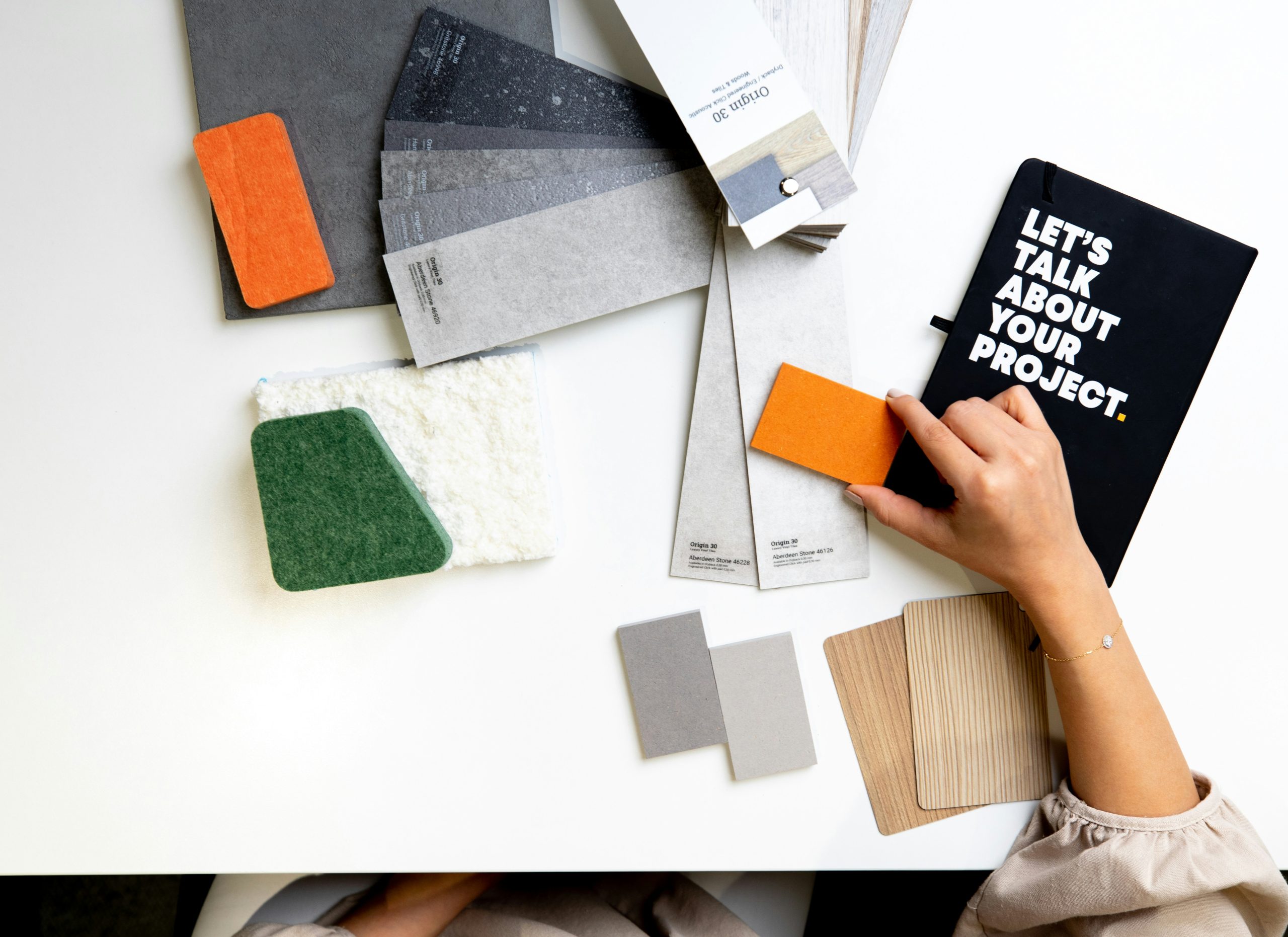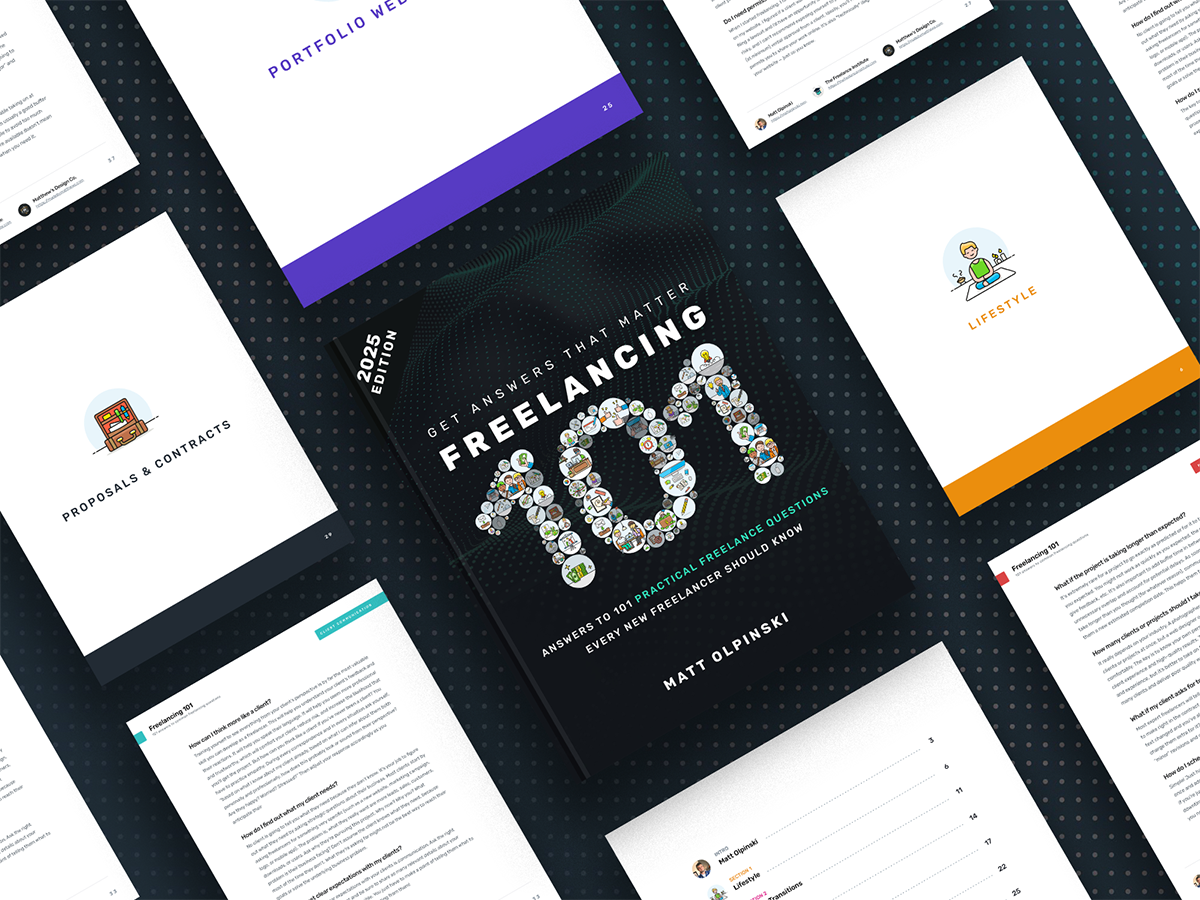How to Present Your Designs So Clients Trust Your Decisions
Even great clients give subjective feedback if you present your design as decoration instead of strategy. Learn how to present your work in a way that earns trust, reduces revisions, and keeps the conversation focused on business goals.


New to freelancing? Start here with my FREE 100+ tip guide.
Price your services, find better clients, and avoid beginner mistakes all in one clear, practical book.
Every client has opinions about how things should look. Even the most trusting ones will often come back with change requests after you present your work.
Why? Isn’t that why they hired you — to be the expert?
Not always.
A lot of clients don’t come to you with a clearly defined problem. They jump straight to the solution: “We need a redesign,” or “Can you make this look better?”
The actual problem (the one that’s hurting their business) often never gets discussed. And when that happens, design becomes a matter of taste instead of strategy.
This is especially common when designers are early in their careers or when clients are new to working with freelance designers. There’s no shared process yet, no mutual understanding of how design should support business goals. So when it’s time to review the work, feedback ends up being vague and subjective (because that’s how the project started).
So by the time you present your work, it’s being judged on looks instead of purpose. The client sees it as a visual upgrade — something to fine-tune until it “feels right.” And when design is treated like decoration, it invites endless subjective tweaks.
But that’s not how design should be viewed.
So how do you present your design in a way that earns trust and encourages feedback focused on results instead of opinions?
It might surprise you, but presenting your work well has almost nothing to do with the presentation itself.
In my experience, there are two key things that lead to fewer change requests and more client confidence.
✨ Freelance InsightIf you present a solution, clients listen. If you present a design, they critique.
Set the Right Expectations
Design is a collaboration. Your client knows their business. You know design. When those two areas of expertise overlap, real progress happens.
But you have to say that out loud. Otherwise, your client might not understand what kind of input you actually need from them—or when you need it.
Helping clients give the right feedback is part of your job. If you spend three weeks on a design and drop it in their inbox with a “let me know what you think,” you’re not doing them (or yourself) any favors.
I start setting expectations long before the first meeting. On my website, I make it clear how I work, what my clients can expect from me, and—just as important—what I’ll expect from them.
That clarity sets the tone for the entire project.
Present a Solution, Not a Design
Here’s where most presentations go sideways: designers spend all their time justifying choices. They walk through color palettes, typography, layout grids—then wonder why the client starts micromanaging those same things.
Instead, talk about outcomes.
Walk your client through how your decisions help solve their business problem. Show how the layout reduces friction. Explain how the new structure helps users navigate faster. Tell them why this version will convert better than what they had before.
✨ Freelance InsightThe more you frame your work around goals, the less your client will frame it around opinions.
Want to go one step further? Invite feedback on purpose.
Say something like, “I designed the navigation this way because it simplifies access for your primary audience. Do you think that makes sense based on your customer feedback?”
Now you’re not just handing over a file. You’re inviting a conversation around strategy. That keeps feedback useful and specific—exactly what you want.
If possible, present your work live—on a call or in a meeting. That gives you control over how it’s perceived. And if you can’t do it live, take the time to put together a companion document. Walk through how the design helps them reach their goals. That extra effort almost always pays off.
Clients who see your work as a tool to fix problems will respond very differently than those who see it as a canvas to be judged.
Design isn’t decoration. It’s not about personal taste. It’s about solving problems that are hurting your client’s business. That makes it measurable. Strategic. Valuable.
So when it’s time to present, lean into that. Talk like a problem-solver. Write like a strategist. And your clients will treat you like a pro.


